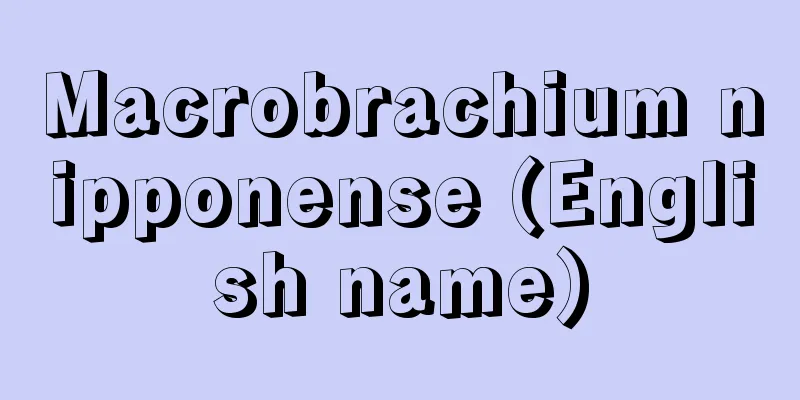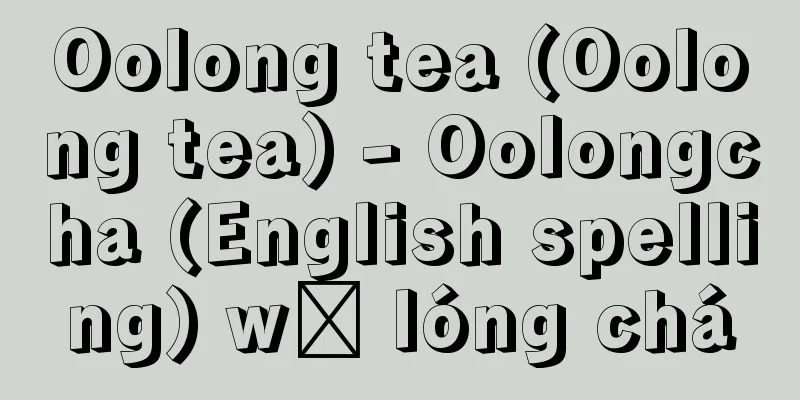Government-run industry

|
Industry was fostered by the Meiji government during the process of establishing capitalism. To counter the advance of Western powers into Asia, the government aimed to establish capitalism by promoting policies of enriching the country and strengthening the military and encouraging industry. After the Meiji Restoration, in order to promote rapid capitalism through power, the government acquired Western-style machine factories, shipbuilding factories, military factories, etc. under the jurisdiction of the former shogunate and various feudal domains, and used them as a foundation to launch government-run industries. In the early Meiji period, the central government agency that integrated and managed these facilities was the Ministry of Public Works, which was opened in 1870 (Meiji 3). At the time, government-run factories under the jurisdiction of the ministry included the Akabane Engineering Branch (machinery), Fukagawa Engineering Branch (cement), Shinagawa Engineering Branch (glass), and the Hyogo and Nagasaki shipyards, as well as the Tokyo and Osaka Arsenals and Yokosuka Shipyard, both of which were managed by the Ministry of War (which was divided into the Ministry of the Army and the Ministry of the Navy after 1872).When the Ministry of the Interior was established in November 1873, processing departments such as the Tomioka Silk Mill, the Senju Carpet Works (for wool refining), and the Shinmachi Spinning Mill were newly established as model government-run factories. While the early government-run factories of the Ministry of Public Works were centered on transplanted industries that were based on the direct import of Western technology, those of the Ministry of Home Affairs focused on indigenous industries that had existed since the Edo period, fostering those sectors and aiming to reduce the ever-increasing import of wool, cotton thread, and other products. These government-run factories, along with government-run mines, employed many foreign engineers, including British, to provide technical training. The government also invested heavily in government-run factories, but most of them accumulated losses. For this reason, the government issued the "Outline of Factory Transfers" in 1880 and established the Ministry of Agriculture and Commerce the following year, adopting a policy of streamlining and downsizing government-run businesses. As a result, the Senju Carpet Factory and the Shinmachi Spinning Mill were transferred to the Ministry of Agriculture and Commerce, and from the mid-1880s onwards, government-run mines, government-run silk and spinning factories, shipyards, and other facilities were successively transferred to the private sector. However, even among government-run factories, military factories such as the Tokyo and Osaka Arsenals and the Yokosuka Shipyard were excluded from the sale, and from the 1890s onwards, they were renamed the Tokyo and Osaka Artillery Arsenals, the Yokosuka Shipyard was expanded into a naval arsenal, and so they were consolidated and improved.In addition, after the Sino-Japanese War, due to the need for self-sufficiency in pig iron and steel, the establishment of the Government-run Yahata Steel Works in 1897 with war reparations was a landmark event in the history of government-run industries. [Hiromi Ishizuka] "Research on the History of the Establishment of Japanese Capitalism" by Hiromichi Ishizuka (1973, Yoshikawa Kobunkan) [Reference item] |Sugiyama-cho, Higashi-ku, Osaka City, Osaka Prefecture (present-day Osaka Castle, Chuo-ku). "Osaka Prefecture Photo Album" (1914, Taisho 3), National Diet Library . Osaka Artillery Arsenal Source: Shogakukan Encyclopedia Nipponica About Encyclopedia Nipponica Information | Legend |
|
資本主義成立の過程で明治政府により育成された工業。欧米列強のアジア進出に対抗するため、政府は富国強兵、殖産興業の政策を掲げて、資本主義の形成を目ざした。明治維新後、政府は、権力による早急な資本主義化を推進するため、旧幕府や諸藩所管の洋式の機械工場や造船工場、軍事工場などを官収して、それを基礎に官営工業を発足させた。明治初期、それらの施設を統合、管理した中央官庁が1870年(明治3)に開設された工部省である。当時、同省管轄の官営工場としては、赤羽(あかばね)工作分局(機械)、深川(ふかがわ)工作分局(セメント)、品川(しながわ)工作分局(ガラス)と兵庫、長崎の両造船所があり、また兵部省(1872年以降、陸・海軍2省に分割)管理の東京、大阪両造兵工廠(こうしょう)、横須賀造船所などが官営軍事工場として存在した。1873年11月内務省が創設されると、富岡(とみおか)製糸場、羊毛精製の千住製絨所(せんじゅせいじゅうしょ)、新町(しんまち)紡績所などの加工部門が官営模範工場として新設された。工部省の初期官営工場が、西欧技術の直輸入を前提とした移植産業中心であったのに対して、内務省のそれは、江戸時代以来の在来産業に注目して、その部門を育成し、増加の一途をたどっていた羊毛、綿糸などの輸入を減少させようというねらいがあった。こうした官営工場には、官営鉱山とともに、当時、イギリス人をはじめ多数の外国人技師が雇用されて技術を指導した。また政府は官営工場に多額の投資を行ったが、それらの大部分が欠損を累積させた。このため、政府は1880年「工場払下概則」を布達するとともに、翌年、農商務省の設置を図り、官営事業の整理、縮小の方針をとった。その結果、千住製絨所、新町紡績所などは農商務省に移管され、また1880年代なかば以降、官営鉱山とともに官営製糸・紡績工場や造船所などが順次民間に払い下げられた。ただ官営工場のなかでも、東京、大阪両造兵工廠や横須賀造船所などの軍事工場は払下げの対象から除外され、1890年代以降になると、東京、大阪砲兵工廠と改称され、横須賀造船所も海軍工廠に拡充されるなど、整備、統合されていった。また日清(にっしん)戦争後、銑・鋼鉄の自給の必要性から、戦時賠償金で、1897年官営八幡(やはた)製鉄所が設立されたことは、官営工業の歴史のうえで画期的な意味をもった。 [石塚裕道] 『石塚裕道著『日本資本主義成立史研究』(1973・吉川弘文館)』 [参照項目] |大阪府大阪市東区杉山町(現在の中央区大阪城)。『大阪府写真帖』(1914年〈大正3〉)国立国会図書館所蔵"> 大阪砲兵工廠 出典 小学館 日本大百科全書(ニッポニカ)日本大百科全書(ニッポニカ)について 情報 | 凡例 |
<<: Kan'ei Imperial Match - Kan'ei Imperial Match
Recommend
Nishikawa Sukenobu
An ukiyo-e artist from Kyoto in the mid-Edo perio...
Nagashima
Formerly a town in the eastern part of Kuwana City...
Interglacial period - Kanpyoki
Between glacial periods, when glaciers expanded a...
The Governor of Kii Province
A local official in northern Kii Province in the p...
Dust collection
〘 noun 〙 The act of collecting fine dust and dirt ...
jail
…The house of correction had a different origin f...
Ségou (English spelling)
…In particular, Timbuktu, which was founded in th...
Sound transmission rate - onkyo to karitsu
… [Sound insulation design] To make a building so...
Refinancing government bonds - karikaekokusai
⇒ Financing Exchange Bonds Source: About Shogakuka...
Kikuma [town] - Kikuma
An old town in Ochi County, located in the northwe...
Setsuko Hara
A film actress. Born in Yokohama. She joined Nikk...
Jindaiji Temple
This is a Tendai Buddhist temple located in Jindai...
Daigo [town] - Daigo
A town in Kuji District, northern Ibaraki Prefectu...
American Individualism
…After graduating, he worked as a miner, then as ...
Chu nom - Chu no m (English spelling)
The Vietnamese national script. Since ancient tim...









